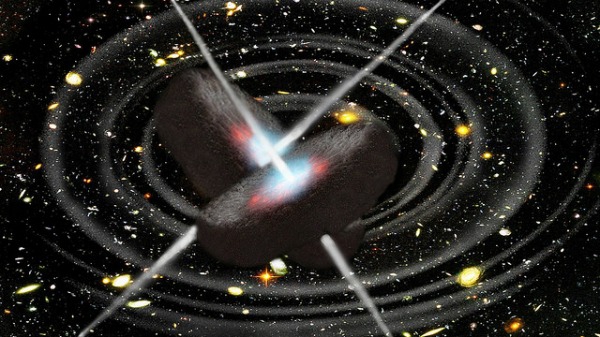-
Tips for becoming a good boxer - November 6, 2020
-
7 expert tips for making your hens night a memorable one - November 6, 2020
-
5 reasons to host your Christmas party on a cruise boat - November 6, 2020
-
What to do when you’re charged with a crime - November 6, 2020
-
Should you get one or multiple dogs? Here’s all you need to know - November 3, 2020
-
A Guide: How to Build Your Very Own Magic Mirror - February 14, 2019
-
Our Top Inspirational Baseball Stars - November 24, 2018
-
Five Tech Tools That Will Help You Turn Your Blog into a Business - November 24, 2018
-
How to Indulge on Vacation without Expanding Your Waist - November 9, 2018
-
5 Strategies for Businesses to Appeal to Today’s Increasingly Mobile-Crazed Customers - November 9, 2018
Say hello to gravity waves
In September of a year ago, strong gravitational waves from the collision of two black holes 1.3 billion light-years away reached the Earth squishing it and everything on it. If you didn’t notice, it’s because they only squished us 1/100,000th of a nanometer for one quarter of a second.
Advertisement
Albert Einstein’s theory of general relativity first predicted the existence of the mysterious waves in 1916.
Physicist Kip Thorne said: “With this discovery, we humans are embarking on a marvelous new quest: the quest to explore the warped side of the universe-objects and phenomena that are made from warped space-time”. When the instruments detected the presence of these waves, the scientists were too astounded to believe.
Gravitational waves detected at last!
Gravitational waves carry information about their dramatic origins and about the nature of gravity that can not otherwise be obtained.
The scientists poured over the data for months before announcing the discovery and releasing their science this week.
Almost a decade ago, the method of how to detect gravitational waves was proposed by Sanjeev Dhurandhar and Satya Prakash who worked at the Inter-University Centre for Astronomy and Astrophysics in Pune.
Literally, gravitational waves are ripples in space-time’s curvature that are caused by collisions of massive and compact cosmic objects like black holes and neutron stars. Analysis of the waves suggests they originated from a system of two black holes, each with the mass of about 30 Suns, that gravitationally drew closer to each other.
It was the first time gravitational waves, predicted a century earlier by Albert Einstein’s theory of general relativity, had been observed.
“Up until now, we have been deaf to the universe”, Reitze said.
Advertisement
Reitze said one black hole had the mass of 29 suns; the other was the equivalent of 36 suns. These ripples would then dash across the universe at the speed of light. We couldn’t be more thrilled with this great announcement. “Research on gravitational waves has scientific significance, [contributing to] the detection of mineral or water resource distribution and propelling the development of technologies such as laser physics and space technology”, Li stressed. When a gravitational wave passes by, the path of the laser stretches slightly and hits the detector a little differently.




























